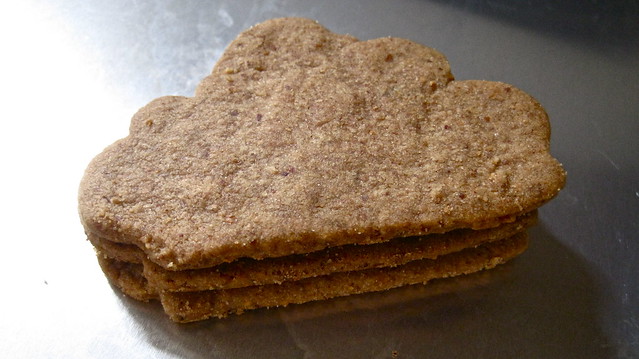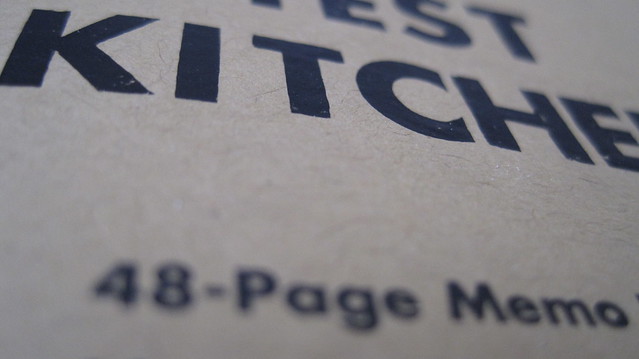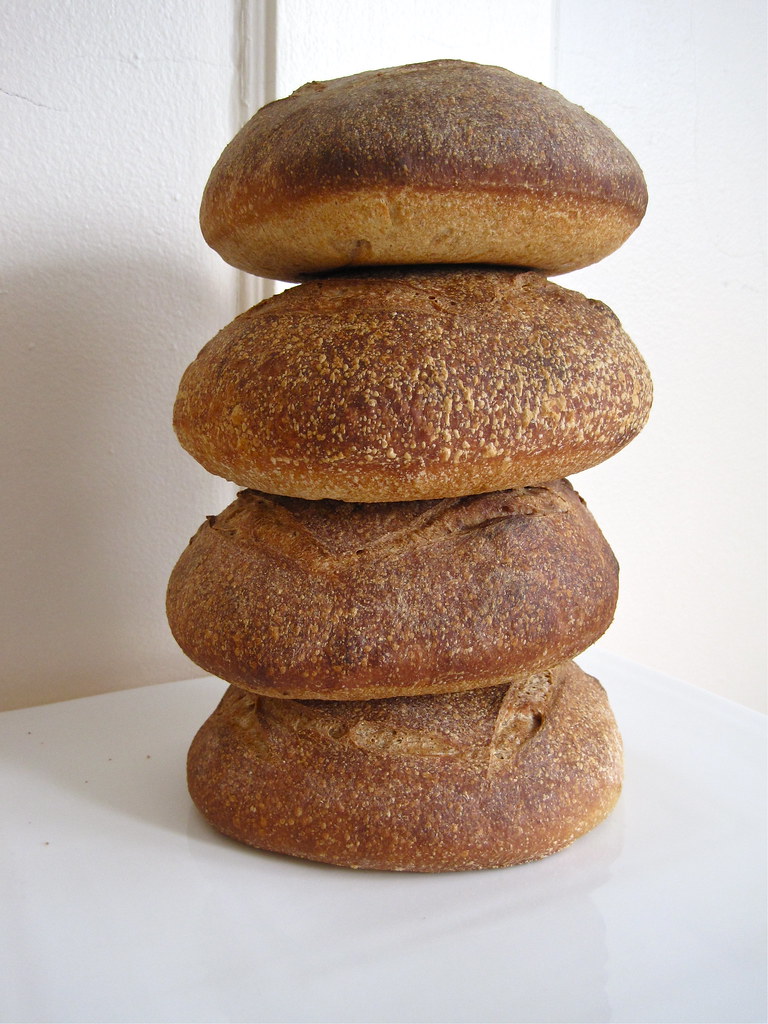It's been an excellent and exhausting week so far. Things have been pretty non-stop, and the week isn't over yet. On top of my usual scholarly duties, I've also been playing B&B hostess, neighbourhood guide, and department representative to a number of prospective philosophy grad students. Everyone I've met has been wonderful, and I really do hope that I'll be seeing them all again in September.
But right before things got crazy--like between eleven and midnight while waiting for our guests to arrive at one--I did get a chance to bake these cookies. They're adapted from a recipe in the much loved, much blogged-about book that Kim Boyce put out last year, Good to the Grain. Admittedly, I haven't baked much from it since having acquired it. Last year, at least, most of the recipes seemed a little too fussy for everyday baking. I guess making a ton of macarons recently has changed my outlook. Besides, these cookies are well worth a bit of trouble.
Still needing a break from anything too complicated, I simplified the recipe a bit. The original calls for an orange-cardamom honey glaze, which I'm sure would be wonderful but not something that I worried about when it was nearly midnight. I also went along with the ingredients that I already had on hand--whole-wheat pastry flour and almonds, instead of amaranth and hazelnuts. The result, while not nearly as exotic and nuanced as originally conceived, is a crisp, nutty, no-nonsense cookie. They stand about halfway between shortbread and linzers--barely sweet with a marvellous saltiness. I think they're fantastic plain, but I can see how they'd be the kind of cookie that still wouldn't be over the top if you decided to flood each with a thin layer of royal icing to make them even more cloud-like. Munch on these when you're far away from home and it's too late for dinner or when the house is still asleep and you're waiting for everyone to be ready for breakfast.
Linzer Shortbread (Cloud) Cookies
Adapted from Kim Boyce's Good to the Grain
Note: as the recipe states, the dough is a rather dry, crumbly one--to make things easier between cutting out the cookies and placing them on my half-sheets, I used a metal dough-scraper and lifted each cookie from beneath and gently transferred it to one of the sheets. There was a risk of the dough breaking apart, otherwise.
2.5 oz (1/2 cup) raw almonds
4.25 oz (1 cup) all-purpose flour
1.1 oz (1/4 cup) whole-wheat pastry flour
2.3 oz (1/2 cup) granulated sugar
0.15 oz (3/4 teaspoon) fine sea salt
4 oz (1 stick) butter, softened to room temperature
4.25 oz (1 cup) all-purpose flour
1.1 oz (1/4 cup) whole-wheat pastry flour
2.3 oz (1/2 cup) granulated sugar
0.15 oz (3/4 teaspoon) fine sea salt
4 oz (1 stick) butter, softened to room temperature
- Preheat oven to 350 degrees F. Spread almonds evenly on a baking sheet and toast them in the oven for 10-14 minutes, until the nuts are dark and fragrant. Remove from the oven and cool. Once the nuts are cool, grind them in a food processor until finely ground, about 20 seconds.
- Prepare two baking sheets, rubbing them lightly with butter or covering them in parchment paper.
- While the nuts are toasting, sift the dry ingredients in a bowl, pouring back any bits of grain or other ingredients that may remain in the sifter. Add the softened butter and the ground almonds to the dry ingredients and rub the butter into the dough with your fingers. The ingredients such barely come together. Dump the dough out onto a floured work surface and press it together.
- Using a rolling pin, roll the dough out to a thickness of about 3/16 inch. If the dough seems to be cracking, push it back into place and continue rolling. You probably won't need any additional flour to roll out the dough, as it will be quite dry. Using your favourite cookie cutter, cut the dough into shapes and transfer them to the buttered baking sheets.
- Bake 20 to 24 minutes, depending on the size and shape of your cookies. They should be evenly golden, with slightly darker edges and a dark golden bottom crust. When the cookies come out of the oven, move them to a baking rack for cooling. These cookies are best eaten as soon as they've cooled, but they'll keep in an airtight container for up to 3 days.








